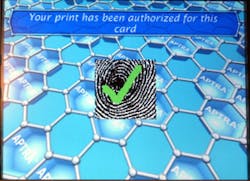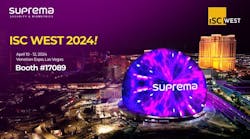DAYTON, Ohio (AP) - They walk up to an ATM and press their thumbs on the screen. Out spits the cash.
New York? No. Chicago? No. The mountains and jungles of Colombia.
It's one of the few places in the world where banks are using fingerprint biometrics, which verify people's identities based on their unique physical characteristics.
Scanning fingerprints or irises to verify an ATM customer's identity has yet to penetrate the U.S. banking market because of concerns about expense and privacy.
Customers must be convinced that the technologies provide more benefit than the card-and-PIN system, which works well, said John Hall, spokesman for the American Bankers Association. The cards also serve functions beyond the ATMs, as debit cards and as advertising for the banks.
"Getting that wallet space is important," said Bill Spence, a biometric expert with Campbell, Calif.-based Recognition Systems.
However, companies that make automated teller machines have found budding markets for the fingerprint technology in South America, where citizens already are accustomed to the use of fingerprints for general identification, such as ID cards they carry.
Diebold Inc. of North Canton has supplied fingerprint-capable ATMs to a bank in Chile that is using them in a pilot project. Last year Dayton-based NCR Corp. installed 400 of them in Colombia.
BanCafe, Colombia's fifth-largest bank, bought the ATMs at the end of 2002 for added security for coffee growers and to get them to open accounts. The growers wouldn't need to carry ATM cards, which can be a lure for thieves.
Ricardo Prieto, who was vice president for system operations at BanCafe when the system was installed, said that at first ATMs failed to recognize fingerprints on the hands of some elderly customers and laborers such as construction workers.
He said the ATM imaging was improved, and the number of customers whose fingerprints couldn't be read fell from 30 percent to 8 percent.
About 230,000 of BanCafe's 1 million customers registered to use the fingerprint ATMs, which account for about 15 percent of the bank's total transactions.
"Biometrics is certainly the most secure form of authentication," said Avivah Litan, an analyst with Gartner Inc., a Stamford, Conn.-based technology analysis firm. "It's the hardest to imitate and duplicate."
About 350 banks in North America are using Diebold's hand geometry systems to clear customers into vaults so they can open their safe-deposit boxes. At Zions First National Bank in Salt Lake City and South Carolina Federal Credit Union, among other customers, users place their hands on a screen, which reads the width of the palm, length of the fingers and other points of the hand.
The added security is attractive because of the valuables in the boxes.
Last year, Suruga Bank Ltd. in Japan began using ATMs that allow customers to access their accounts by holding their palms up to machines that read the pattern of blood vessels.
Finger scans - in which people are identified by multiple points on the finger rather than fingerprints - are being used at grocery stores and by people renting lockers at some airports, train stations, theme parks and the Statue of Liberty.
Later this year, NCR plans to begin selling finger scan readers to stores for use by customers and employees. The technology is designed to speed up checkout and to prevent theft. The scans verify which cashiers are operating the registers in case there is missing cash and the identity of managers who approve customer checks.
These systems involve a small number of customers who elect to use them. Converting ATMs from the card-and-PIN system to fingerprint technology would affect far more people and in effect leave them little choice.
Systems that scan the iris of the eye are being used at airports in Canada and Amsterdam to check passengers going through customs and at border points in the United Arab Emirates to identify people trying to enter the country with fake work visas.
Diebold has tested ATMs with iris scans, but banks have yet to adopt the scanning because the systems were expensive and the cameras too large for small ATMs. Users had to practically put their noses on the screen for the scan to work.
Iridian Technologies, based in Morristown, N.J., has developed a smaller camera that costs under $1,000 and can photograph the iris of a user 18 inches away, said CEO Frank Fitzsimmons.
Linda Campbell, 49, of Springfield, said she probably would use a fingerprint ATM as long as she was sure that no one else could obtain her fingerprint.
But Connie Steele doesn't believe the technology would add that much more security to the card-and-PIN system.
"If I'm a thief and I've got the card, I still don't have your PIN number, so how could they use it?" said Steele, 57, of West Milton.
Supporters of the technologies are confident that bank customers eventually will accept the new ATMs.
"The real holy grail in biometrics," said Jim Block, Diebold's director of global advanced technology, "is let's get rid of the PIN so no one has anything to steal anymore."


